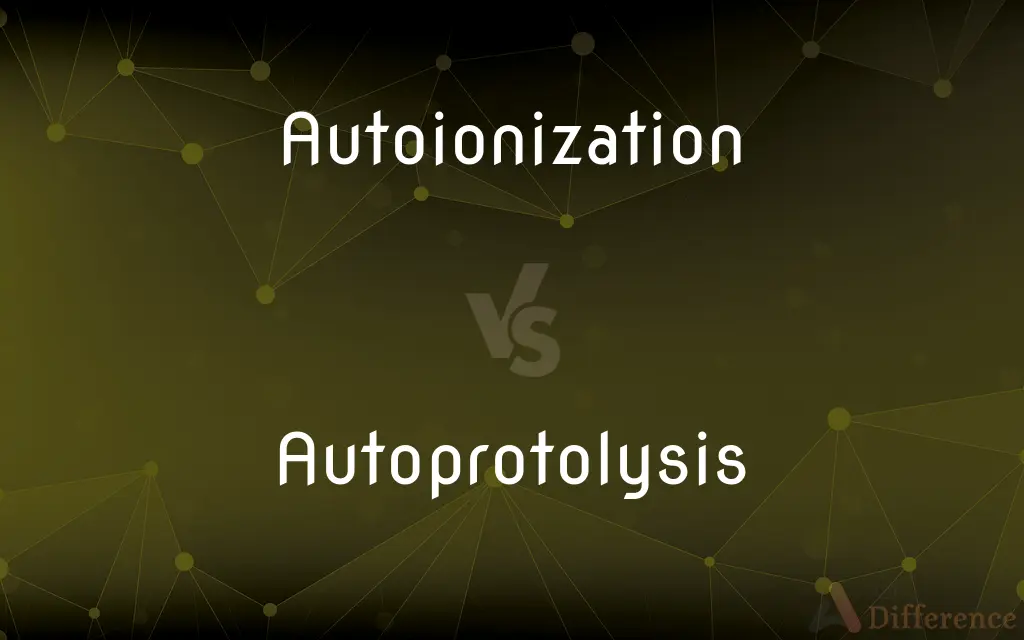Autoionization vs. Autoprotolysis — What's the Difference?

Difference Between Autoionization and Autoprotolysis
ADVERTISEMENT
Compare with Definitions
Autoionization
Autoionization is a process by which an atom or a molecule in an excited state spontaneously emits one of the outer-shell electrons, thus going from a state with charge Z to a state with charge Z + 1, for example from an electrically neutral state to a singly ionized state.Autoionizing states are usually short-lived, and thus can be described as Fano resonances rather than normal bound states. They can be observed as variations in the ionization cross sections of atoms and molecules, by photoionization, electron ionization and other methods.
Autoprotolysis
In autoprotolysis a proton is transferred between two identical molecules, one of which acts as a Brønsted acid, releasing a proton which is accepted by the other molecule acting as a Brønsted base. For example, water undergoes autoprotolysis in the self-ionization of water reaction.
Autoionization
A process by which atoms or molecules spontaneously transition from an electrically neutral state to a lower-energy ionized state
Autoprotolysis
(chemistry) The autoionization of water (or similar compounds) in which a proton (hydrogen ion) is transferred to form a cation and an anion e.g. 2H2O => H3O+ + OH-
Share Your Discovery

Previous Comparison
Woke vs. Awake
Next Comparison
Tube vs. Canister














































